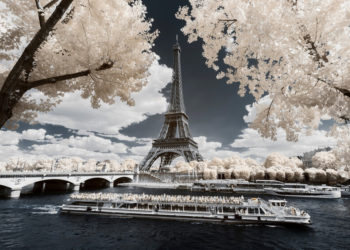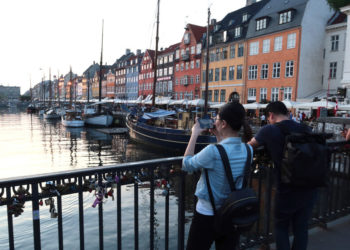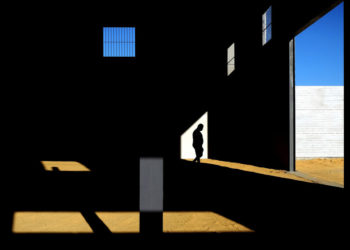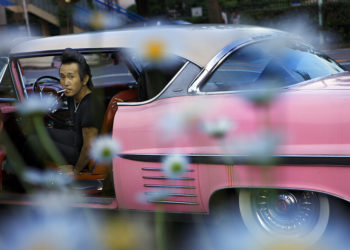home
>
Blog
>
Photography
>
Build Your Own Light Box At Home – Take Pictures Like A Pro
Build your own box …
How to take a professional photograph at home? If you want to sell your products online or you are starting in the world of photography, it is important to know that lighting is an important element to achieve perfect photos. If hiring a professional is not yet within your budget, a homemade light box will go a long way to help you achieve better quality when taking photos at home. You will only have to acquire a few items to start building your own light photo box.
In this note I offer you to learn together how to build a homemade light box quickly, easily and inexpensively. I promise you that the process will be easy and illustrated and at the end of the day you will be able to take your own photos with a light box.
Ready to start? 🥳
Index
- What is a photography light box?
- Types of light boxes
- How to make a photography light box?
- How to take photos with a light box?
- Final recommendations for taking photos in a light box
Surely you have ever seen photographs of products, either in a catalog or in your favorite online store, and you have asked yourself: how do they do it? Yes, that magnificent photograph was probably taken with a photography light box.
This accessory is very useful for still-life and catalog photography, this is precisely because of the warm, uniform and shadow-free finish it achieves on small and medium-sized objects. If you think that only a professional can achieve these types of results: it is not the case. By making your own photography light box, you will get great results and great quality.
Also called in English Soft Box or Tend Light, they can be of different sizes and the light that we use can be continuous like flash light. There are two main types of home light box:
- In one type of model, the light sources are placed outside the photo light box and radiate through the translucent walls.
- In the other model, the white walls of the home light box and the light is located inside the box, usually at the top, which will radiate light evenly.
It is important to remember that in both cases, the funds to make a homemade light box must be neutral or solid to highlight the product.
The materials to make a photography light box, according to Wikihow, are:
- 1 cardboard or wooden box. It will be the structure of your home light box.
- White cloth. They will be the walls of the light photo box.
- Cutter or Scissors
- Pencil
- Rule
- Scotch tape
- Desk lamps
- Matte white cardstock
- Photo camera or smartphone
- White rubber
- Bed bugs (thumbtacks) (optional)
Given the current situation, remember to check if you have the materials to build your own light box for photography somewhere in your house or you can ask a family member or neighbor. Otherwise, delivery is also an excellent option to avoid going to public places.
1. Choose a cardboard box larger than the product you want to photograph
To have a light box at home that is useful to us on various occasions, you must find the largest box you can, and thus use it with all the products you want.
How to make a sturdy photography light box? Simple. Find a box that is made of a hard material, preferably wood; However, if you decide to do it with this material: the best tool to cut it will be the utility knife and not the scissors.
2. Secure the edges of the softbox with tape

Image: Pexels
Flip the box over and press down on the flaps with the masking tape so that they lie flat. This will allow the homemade light box to be a sturdy item. Remember that you will also need to glue the flaps to the inside of the light box. Even if the box is reinforced with tape, do it again to give it greater stability.
3. Measure the windows (where the light will enter your home light box) on each side of the box (minus the bottom one) 🧸
Lay the box on its side, so that the top flaps are facing you. Use the ruler to mark a point about 5 cm away. from each edge on one side of the softbox. Now, use the pencil to join them, creating a rectangle with spaces around the edges. You should do it on the opposite side as well.
The size of the sales should be covered later by the pieces of white cloth. Make sure you have enough fabric available to finish the homemade light box. You can also draw a window at the top of the box, which will allow light to radiate from above.

Image: Unsplash

4. Once you have defined your rectangle, cut out the windows
Use the utility knife or scissors, depending on the material, to cut the marked lines on your homemade light box. Cut all the lines until you remove the pieces in the middle, which will leave a small window.
PRO Tip: If you want to achieve a professional effect when making your photography light box, you should hold a ruler against the lines and cut them to length.

Image: Unsplash
5. Cut out a piece of matte white card that is the same width as the box.
You will need to place a piece of matte white card stock on top of your homemade light box. Use the scissors to trim the edges, and make sure it fits inside the box. The width should be the same as the box and about twice the length of the top.
PRO Tip: Use thick card stock so it won’t wrinkle when you place it inside the softbox. A single piece of card should cover the top, middle, and bottom of the inside of your box.
The white cardboard will give your home light box an effect without walls, as if the product to be photographed was “alone in space”. Remember that the cardboard material must be matte.
6. Use the masking tape to stick the card stock on the edges of the light box
Put a piece of masking tape on the top edge of the homemade light box. Remember to match the edge of the cardboard with the edge of the box so that it is not damaged by the adhesive tape, you must press to obtain a smooth and uniform surface. Repeat the procedure on the inside bottom of the box and the underside.
PRO Tip: For an “infinity” finish, avoid creasing or creasing the cardstock. You should form a slight curve on the inside bottom of the softbox. You don’t need to cover the entire box.
7. Cut two pieces of the fabric to cover the sales.
This will make the light from the desk lamps dim and your lightbox photos look spectacular. This will give you a uniform lighting effect. Make sure they are larger than the window, preferably the size of the face of the box you are about to cover.
PRO Tip: Cover the left and right outer edges of the softbox with a little rubber and apply evenly. The material must not reflect light to work well.
8. Once the rubber dries, reinforce the white fabric with masking tape over the edges of your homemade light box.
Start at the top edge, repeat with the sides, and finish with the bottom. Do the same with the other side of the box.
1. Place the object / product inside the home light box
Place the finished light box on a large, flat surface with spaces on the sides to place the lamps. Remember to put the object in the middle of the box so that the edges are not visible.
PRO Tip: Use the camera’s viewfinder to position the subject in the best position. Also, explore different angles so that the photo in your home light box is spectacular. If you still miss a piece: edit it with these tips.
2. Place the lamps on both sides of your home light box
The best thing about these lamps is that they radiate light in only one direction, which will give you better precision to take the best photos in your softbox. They should look directly through the windows.
PRO Tip: Place the lamps at a distance of at least 13 cm. This will prevent the fabric from overheating. A very interesting way to test different effects in your light box is by adjusting the height of the lamps. Use white and not yellow light for a professional, catalog-like effect. You surely have some at home. 😉

Image: Pexels
3. Create, play and enjoy the effects with your camera
Don’t worry if the first few photos are too bright, remember that you will need to find the perfect balance between ISO, shutter and aperture to get a perfect shot in your photography light box.
PRO Tip: It will be easier if you have a smartphone, you only have to select the automatic mode on your camera, but remember that if you have a camera, the subsequent editing options will be better.

Image: Unsplash
4. Take the picture!
It will all be worth it once you’ve lined up your lamps, camera setup, and your subject. You are ready to click. Take multiple photos in your home light box, so you have more options to choose the best one.
PRO Tip: Use a tripod for better grip and stability. If it does, you can use the flaps of your box to block excess light, which could affect the effect of the light box.

- Use several background colors, don’t just stay white.
- If you want more lighting, remove the cardboard and open a new window on top of your homemade light box.
- Play with the lights and shadows to explore new effects.
- Do not use yellow colors for lighting the lamps.
- Play with depth of field, sometimes with a blurred background, sometimes with a very sharp one.
- Align the aesthetics of your photos and make sure they have several elements in common to maintain a line.
Now we have concluded our journey so that you have your own homemade light box. We have reviewed a simple and quick technique to obtain professional results on a low budget. Now you know how (1) to put together this very important element for your online store or business step by step (2) you know some good practices to achieve even better photographs. Let yourself be carried away by your imagination when creating amazing photos to show your products. And remember, practice makes perfect.
Until next time! 🔝

![Homemade light box: what is it and how to make it step by step [2021] | Crehana 🏪](https://big-photography.com/wp-content/uploads/2021/01/caja-luz-casera-1140x570.jpg)




![📸 Learn to master the Bokeh effect like an expert [2021]](https://big-photography.com/wp-content/uploads/2021/01/blog-75x75.png)


Discussion about this post